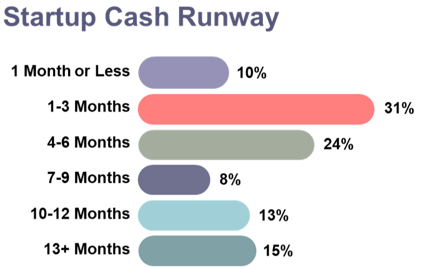
Navigation
Contact Information
2570 Agricola St, Halifax, NS, B3K 4C6
Email: info@timespacemedia.com
Phone: 902-429-8463
Subscribe to our insights newsletter

In this Blog you will find:
By now, you’ve likely heard the statement that COVID-19 has become an accelerant to business trends. The pandemic has been pushing trends that were emerging to the mainstream, in some cases overnight.
We all know it instinctively, as we cross the notional finish line on the pandemic (whenever that could be) some items will revert, others will never go back.
We’ve taken a moment as an organization to reflect on these items, to gain an understanding of the impacts both immediate and long-term.
From discussions with numerous Sr. level marketers, the one consistent theme we hear is around analytics. Simply put, if this wasn’t already critical to your business, it is now.
Managing by your experience and gut simply cannot continue, and for many of you reading this, that time passed potentially years ago. But if that time is feeling like it is “now”, consider this your wake-up call.
CRITICAL TO NAVIGATE THE NEAR TERM
The business decisions made today will alter your company’s forward trajectory. But these are massively uncertain times, the ground is shifting around us, and the pandemic appears to be a swinging pendulum of impact depending on your geographic region.
Leveraging analytics in today’s environment opens up opportunities for your organization to flex your predictive powers to both your internal stakeholders and clients.
Improving items such as demand forecasting for your products and or services, predicting supply-chain issues and also forecasting support needs of your clients are all items analytics can support.
The above noted are items that are surely critical in some way to your business.
THE INSTINCTIVE FEAR
The natural concerns are warranted as ambitious projects like installing an analytics division into your organization have, historically, been costly and time-consuming. If your knee jerk reaction were to think of multi-year projects, massive consulting retainers, huge CAPX and OPEX investments, it could be said those are all very legitimate concerns.
Your organization may also be there now, although many are likely beginning to realize that some of the data being collected and disseminated through their organization lacks the same relevance today as they did pre-pandemic.
Though the true reality is that today, bringing deep analytics insights to your organization is a practice that can take mere weeks to define and deliver, no matter if done by in-house or external resources.
Coming to this realization is vital, we say “no” far too often and that in this case, this reaction will have a future impact on your organization is critical.
YOU’RE MORE AGILE THAN YOU KNOW
No, really.
Agile development methodologies have evolved, now bringing a legitimately viable product to your organization within weeks is a reality.

*Agile Project Management Framework
For many organizations, COVID-19 was, and still is, a stressful event for their day-to-day, in the sense of the potential impact to normal business operations.
Many faced the fears of their ability to provide business functions, which required a manual and dated approach. But as we know, many of those concerns we all had were massively overblown. Our teams adapted, changed the ways they worked, communicated and executed.
FIND EASE
Forget perfection, speed wins here. It’s essential to disconnect your need for complete data accuracy to move towards speed to market.
Ask yourself, would you rather have something next week that is 90% accurate, knowing the gaps or have something in 6-months that is 100% accurate.
But an essential point in the above comment around the gaps. No question that gaps in data will exist, which need to prioritized within an organizational roadmap for improvement, but that also needs to be made aware to those using the data.
Armed with information, users will then use the data and combine it with additional sources or insistence to bring the confidence they need to make those decisions.
BUILD FOR TODAY & TOMORROW
An important variable that many organizations tend to get wrong is the vision can be ultra-short-term. Focusing purely on the data we need now, which is entirely justifiable, arguably in today’s environment a difficult thing not to do.
That being said, it’s vital to think in terms of the short-term needs and also to take a moment to pause, to define the long-term needs of the org and predict what the analytics needs may be.
In lies a potential culture shift that may be required, as many organizations tend to focus on the short-term vs. the long-term. Again, a strong case for seeing this accelerate over the pandemic, although that trend started long ago. McKinsey has noted within a survey of some 1,000 C-Level execs, that short-term thinking was reaching a high-point, with some 87% of respondents feeling pressure to deliver within two years. Keep in mind that this type of thinking permeates an organization.
Preventing this from occurring may not be simple, although some steps can be made to help prevent the short-term view.
Creating a company-wide roundtable to discuss your data and analytics needs will be a beneficial exercise. Pulling in those individuals from various departments to collectively address the current state and also create the forum to dream the future state. Allow these individuals to dream and keep the “no” language mentioned above as far away as possible from this forum.
Incorporate the needs for analytics superiority into your business planning for each business unit. No matter the functional unit, there will be short and long-term needs that must be made as a priority.
Yes, planning what you will do, what markets you will reach, products/services you will offer, and how your business will grow is essential.
Equally important is what you will need to support this from a business intelligence/analytics perspective accurately.
Establish a steering committee that can see the analytics needs and enable them to ensure you are progressing. The value of this committee shouldn’t be capped at ensuring your IT needs have been met and that the project is running on schedule; it should go far beyond the standard approach.
Installing analytics “first” thinkers into the steering committee, those who can think long-term will have immense value to your organization over time.
KEEP THE MOMENTUM
Distractions are everywhere currently, so keeping momentum behind an initiative of this magnitude will put your organization to the test.
However, as a leader, you must continue to make investments, motivate your team and over-communicate the vision. Doing so will ensure that your efforts are not short-lived.
We will also highlight a few additional areas of focus that will help you build and maintain momentum.

Hire – While many great people have suddenly found themselves looking for a new home, you may find that the talent pool has shifted dramatically in your favour.
Many startups in both Canada and the United States are being challenged through these times. Forbes has noted that things may begin to get ugly in this space in October.
This has created an advantageous moment as those who have historically been more “risk adverse” in their career may look for stability.
We’ve talked about moving quickly earlier, those who have experienced the startup world understand the value in speed and can also bring new thinking to your org.
Re-Skill – We have recently shared some insights on the value of re-skilling your workforce.
Some of the resources you feel you may require to execute on your analytics vision may be within your organization today.
Finding those individuals who have the right mindset, and the ability to develop their skills rapidly will make a perfect fit. You will also benefit from their knowledge of internal stakeholders, processes, etc.
Seek Feedback – Let others be heard, seek their feedback and action it.
As you’re fully aware, pushing an organizational initiative uphill can be a challenge. But forming your approach based on the feedback of a cross-functional team within your organization will allow for improved speed and, most importantly, buy-in.
Communicate – Simply put, companies that communicate effectively to their employees outperform those who do not. Harvard has in fact, published research that underscores this. With organizations that “have the courage to talk about what employees want to hear”, communicating effectively have a 47% higher return.
If the pandemic has taught us anything, it is that change can happen quickly, and our ability to adapt and pivot through that change will equate to business failure or survival.
Leaders must build new and different ways of thinking to ensure their survival and a stronger tomorrow for their organizations.
We believe that a pragmatic approach to analytics can be part of the solution for many organizations.
If you need support in guiding through that process, feel free to reach out to our team.
2570 Agricola St, Halifax, NS, B3K 4C6
Email: info@timespacemedia.com
Phone: 902-429-8463
Subscribe to our insights newsletter